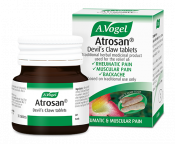Why does the cold affect our muscles and joints?
Well, firstly, when muscles are cold, they are never as flexible and energetic, meaning they are more likely to become damaged and painful.
However, in most people this passes once they ‘get going’. But what if the cold weather brings about fatigue, balance problems, muscle weakness or headaches? When those symptoms are worsened by the cold, it might be because of the changes in air pressure that precede a change in the weather. Higher humidity, lower air pressure and high winds are associated with headaches (and migraines) in many people.

The cause is not yet known for sure, but much like the sensation of ’brain freeze’ some people get when they eat ice-cream, cold air might stimulate the trigeminal nerve that is responsible for skin sensations in the face and neck (and mouth, hence the ice-cream ‘brain freeze’). The cold causes blood vessels to constrict, causing the headache. Migraine sufferers may already have an increased sensitivity to sensory changes (hot/cold, light/dark, noise/silence etc) and a lower pain threshold too.
6 ways to stop the cold weather aggravating your aches and pains
1. Try to overdress rather than underdress because you can always remove a layer if you’re too hot. For those who suffer headaches, wrap your neck in a scarf.

2. Make an extra effort to get any draughts in the house sealed as people can have heightened sensory sensitivity and as a result feel the effects of changes in temperature even more.
3. Don’t stay out in the cold too long. Make the most of the time outside to warm your core, and get home and warm up to maintain the benefit – the best of both worlds.
4. Set your heating to come on a couple of hours before you get up in the morning and warm the car up before setting off so that painful episodes don’t strike before you even arrive at work.
5. Try to keep moving rather than shrinking into the sofa as this generates heat and improves flexibility and the range of joint movement.

6. Acknowledge the impact of the colder weather on pain. By making allowances and planning ahead you should find the winter months more tolerable than in the past.
How to ease pain when it strikes
If you're finding that the coler weather is upsetting your muscles and joints, you could try using heat therapy to relax and soothe them: a warm bath, a heat pad or a hot water bottle.
 You could also try rubbing arnica gel on your sore joints and muscles 2-4 times a day to provide pain relief. This is great as you can apply it before you go out so it can relieve pain while your out in the cold.
You could also try rubbing arnica gel on your sore joints and muscles 2-4 times a day to provide pain relief. This is great as you can apply it before you go out so it can relieve pain while your out in the cold.
You may also wish to take Devil's Claw over the winter months, as this is licenced for relieving muscle and joint pain.
Originally written on 12/01/2015, updated on 31/10/2018.









